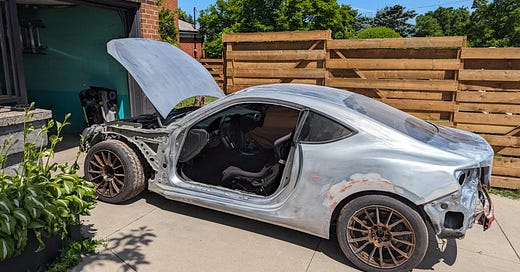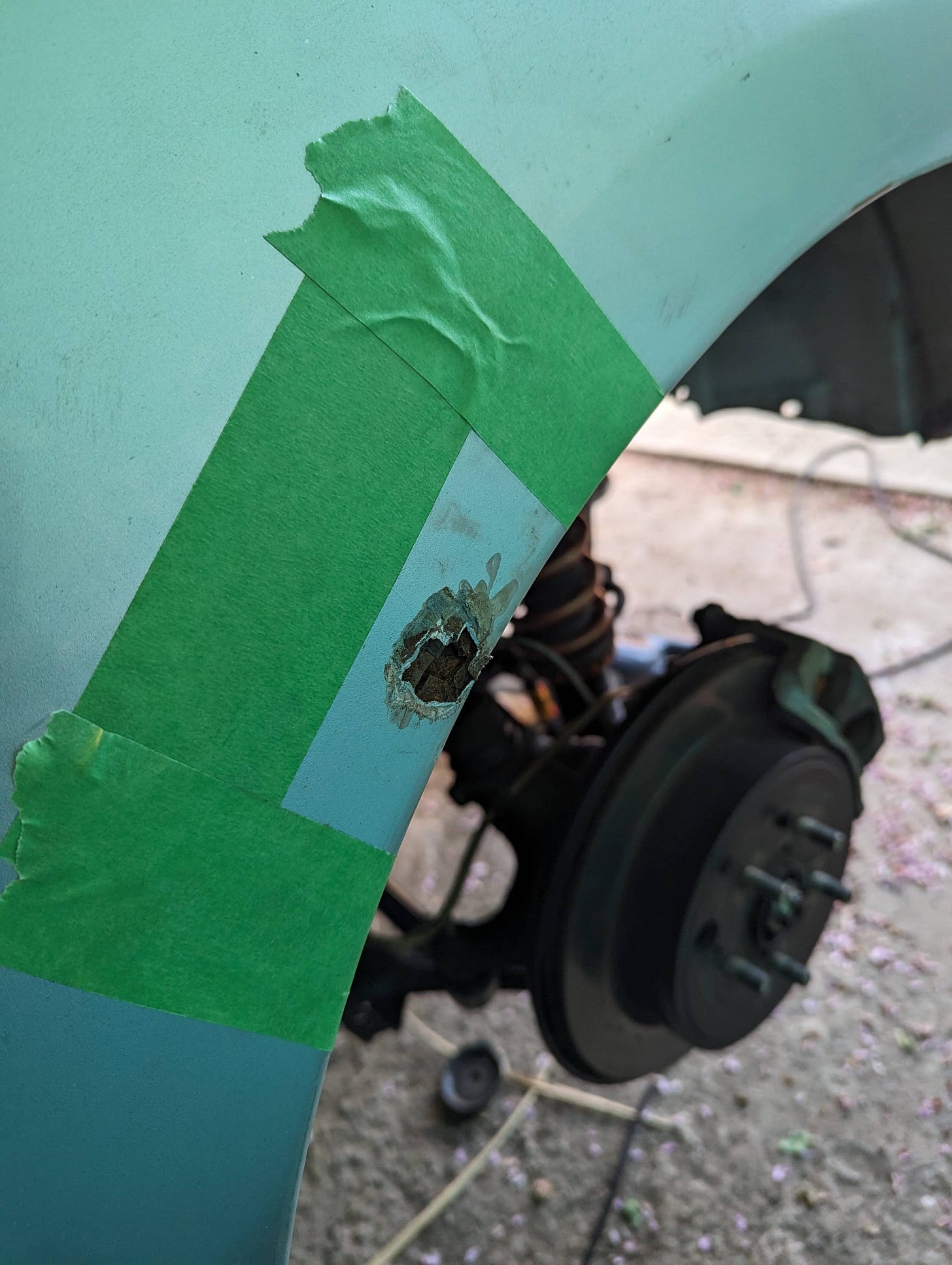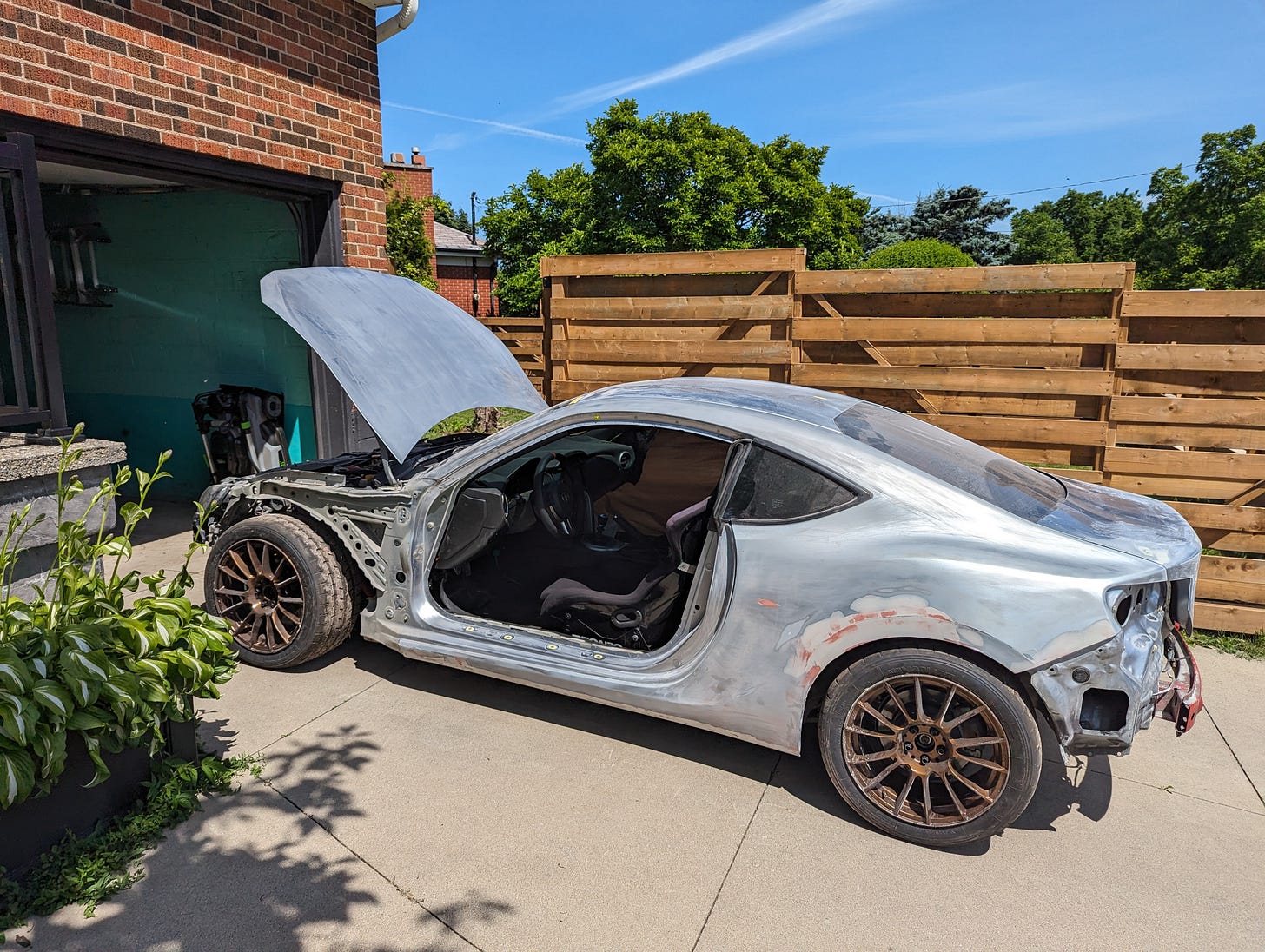I’ll start here; I thought I was smarter than this.
I’ve made some wise car-buying choices over the years. My 1999 Miata was a great example; clean, hardtop equipped, and rust-free. I daily-drove it for four years (including through four Canadian winters), it taught me loads about driving and never left me stranded. That is until I attempted an awful engine swap in my parent’s garage, but that’s a story for a different day.
Then came my 2014 FRS. I bought it for $15,000 with just 54,000kms and a year left on the powertrain warranty. I drove the absolute snot out of it for five years and 90,000 km until it met its tragic end last year. It was a reliable steed, and probably the last cheap, new-ish car I’ll ever have the privilege of buying.
So when I bought this non-running and endlessly abused 2015 Subaru BRZ, I had some explaining to do. I’ve talked at length about the inherent goodness I believe these cars possess, so I’ll start by taking you through the numbers.
At $6000, it’s the cheapest car I’ve ever bought. That would have been a deal if it weren’t for cut-up front fenders, the FRS front bumper, and hole in a rocker panel. The silver lining was that it came with a trove of parts: an OMP seat, aftermarket control arms, harnesses, wheels, a 5.3 final drive, and a carbon-synchro-equipped transmission. I also had a massive store of parts from my FRS, so figured I could recover most of the car’s price just selling parts off of it, making the chassis itself cheap.
I was half right. The car’s transmission was shot. I drained it’s transmission fluid and found detent ball bearings in the gear oil, so it couldn’t be sold. Other parts just didn’t sell for much, or were just incredibly difficult to sell.
Selling parts net me $3000, which meant the chassis cost me $3000. If I could get the body work repaired and the entire chassis repainted a custom colour for another $6000, I could sleep at night knowing I spent about $9000 on a pretty chassis for my new FA24 swap.
Bondo king
This project’s budget - the entire project including airbags - was $20,000. A reasonable number given the FA24 build, my chromoly rollbar, airbags, and the plethora of body work needed.
I briefly considered handing the car off to a shop for body work, but that dream died quickly. Firstly, because the sheer amount of body work needed would have almost certainly gotten me laughed out of the building. Secondly, because it probably would have cost me $10,000; significantly more than a running BRZ would cost and way more than I had budgeted.
It was at this point that I convinced myself that I could just do it. After all, I wouldn’t be the first guy to rattle can a track car in his garage. More on that later.
I started with the easiest problem to solve - a paint bubble on the driver’s side rear fender. I grabbed my dremel and started to grind away the bubble until..
Like I said, I thought I was smarter than this.
The problem, I learned, was that this rear quarter panel already had a layer of bondo over it from a previous repair. When the inside of the quarter started to rust, it managed to grow a lot before appearing on the surface. So I did the only thing I could think of. I started cutting, and found more rust.
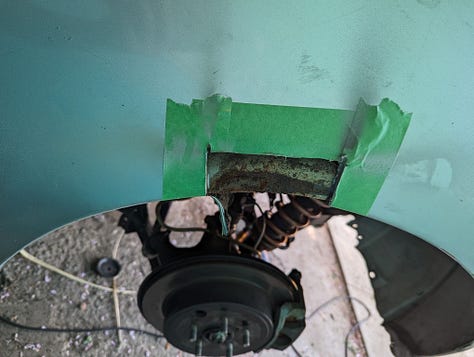

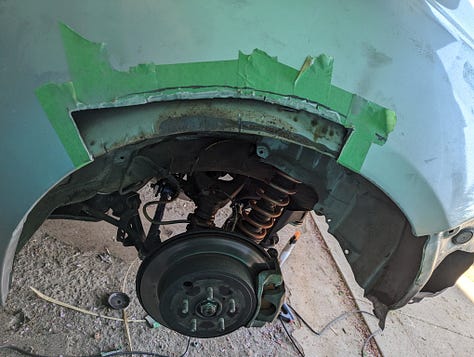
More cutting. More rust.
More cutting. More rust.
Eventually, I was left with a massive hole to reconcile with. I swear to you that I’m not exaggerating when I say that I was on the verge of a panic attack at this point.
I’ve been called brave more than a few times in response to work I’ve done. Installing hood vents, a roll bar, building an FA24 on my office floor, etc. Having experience doing difficult things makes differentiating between “knowing enough to try new things and do them well”, and being way in over your head, difficult. When I built my FA24, I felt like I had the right combination of experience and resources to make this happen. I had no plan when I started hacking up my quarter panel.
Rust repair is one of those jobs that isn’t typically looked at through the lens of sustainability. Afterall; if you’re patching a hole, that doesn’t speak well to the rest of the chassis. For that reason, there’s half a million sketchy rust repair videos on Youtube.
The proper way to repair this would be to replace the entire quarter panel, and Toyota will sell you a rear quarter panel new, in box, for around $450. (new cars ftw) Obviously that means removing the rear windows and drilling out half a million spot welds, and effectively rebuilding the entire corner of the car. I could have justified that if the rear quarter panel wasn’t already full of bondo. But since it was, replacing old bondo with new bondo couldn’t make things worse - could it?
Installing a metal patch now seemed like my most reasonable option, but there was a problem: I can’t weld. So I landed on the next best option that i’m aware of; 3M panel bond.
This raised a lot of eyebrows amongst my friend group, but I say this without a hint of irony; I genuinely think this a better option than welding, in non-structual applications. Because welding, even if you use a good weld-through primer, will leave exposed metal (i.e., the weld itself) inside the quarter panel where it can’t be painted. A proper 3M panel bond repair means coating the exposed metal in adhesive, which is an excellent corrosion inhibitor. If all goes well, the repair should last the life of the car… or at least the life of the bondo sitting on top.
And if you’re thinking “that’s going to look horrible”, let me remind you that the panel was already covered in bondo, so any jankyness in the patch could be corrected with… more bondo. So with little to lose, I picked up some sheet metal and after performing my best metal-worker impression, managed to make myself a convincing fender patch. From there, it was just a matter of gluing the panel in using temporary rivets while it dried.
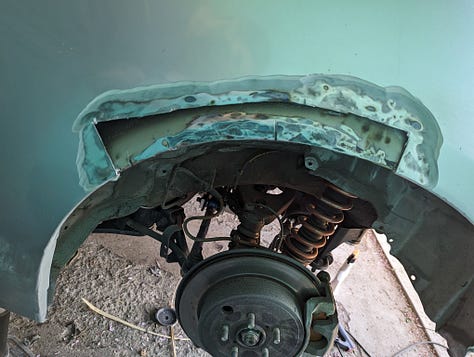
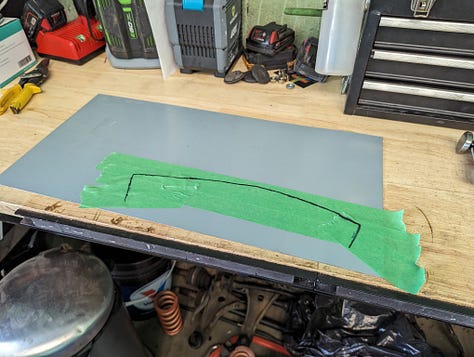
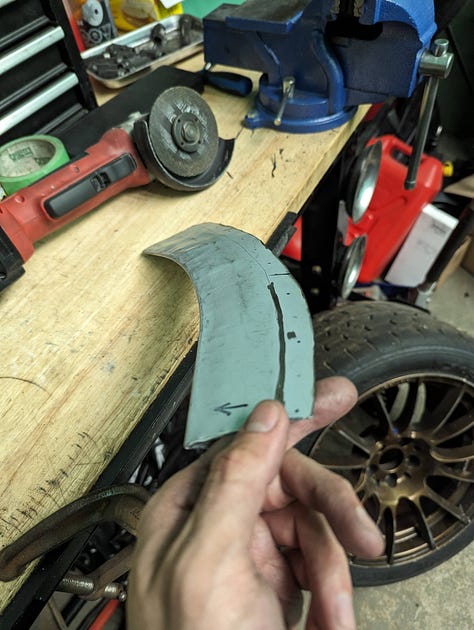
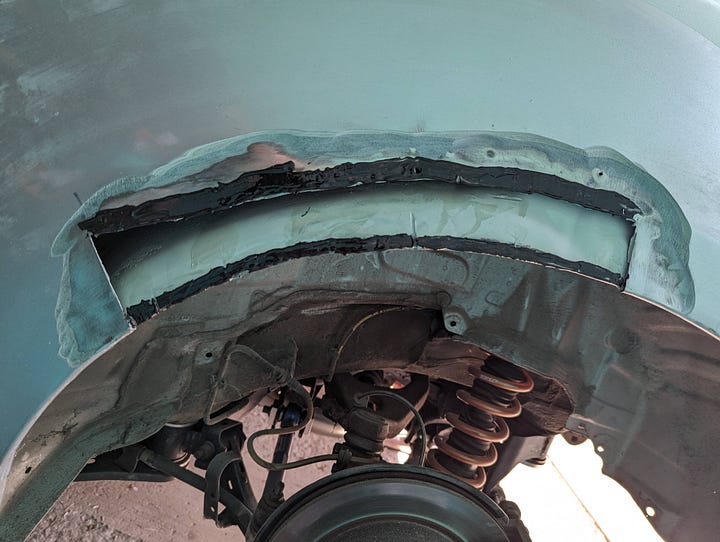

Bondo is an interesting thing. It’s an objectively poor repair method (compared to repairing the entire panel), but it feels like art. Carving a fender line out of this gooey mess of filler is the closest thing to creating a literal sculpture i’ve ever experienced. Dusty. Tedious. Labour intensive art. I ended up applying an enormous amount of bondo to the quarter panel, drawing a fender line with a marker, and proceeding to spend an eternity removing most of it in the process of creating a respectable fender line.
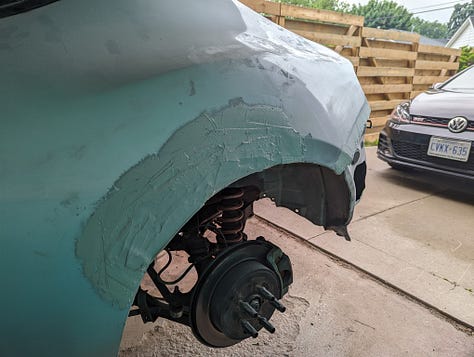
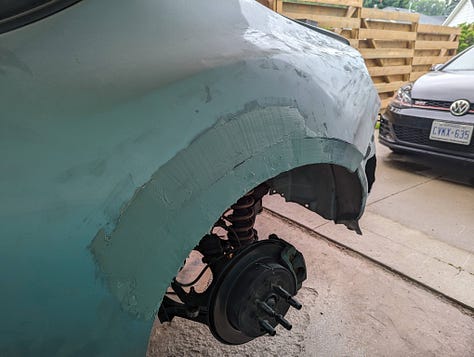
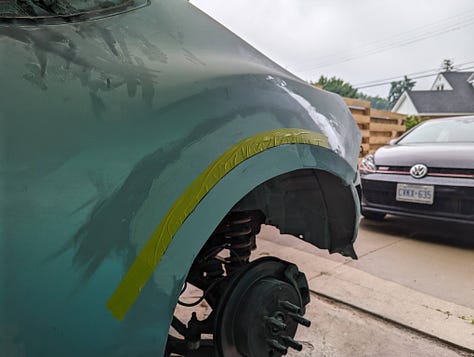
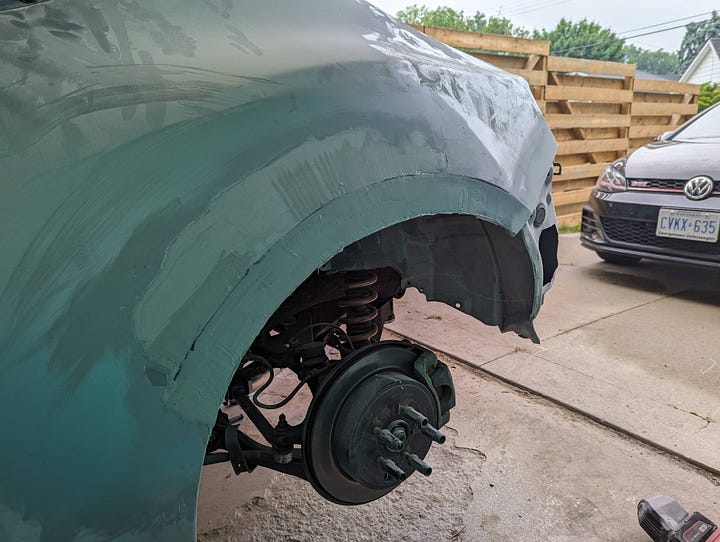
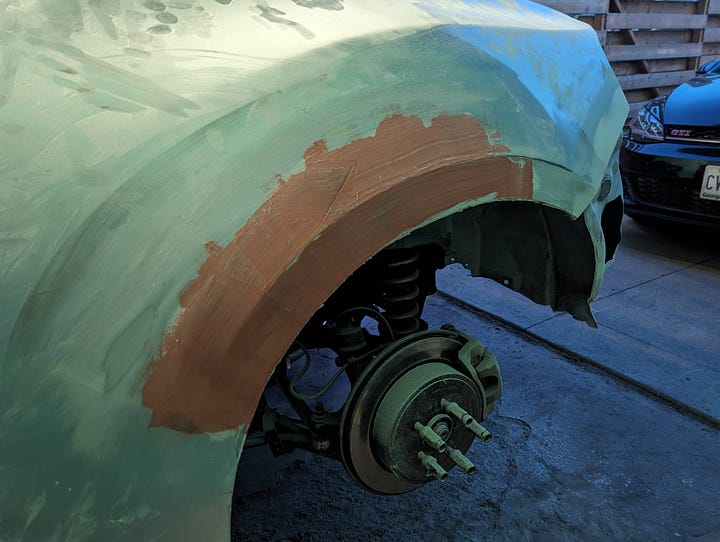
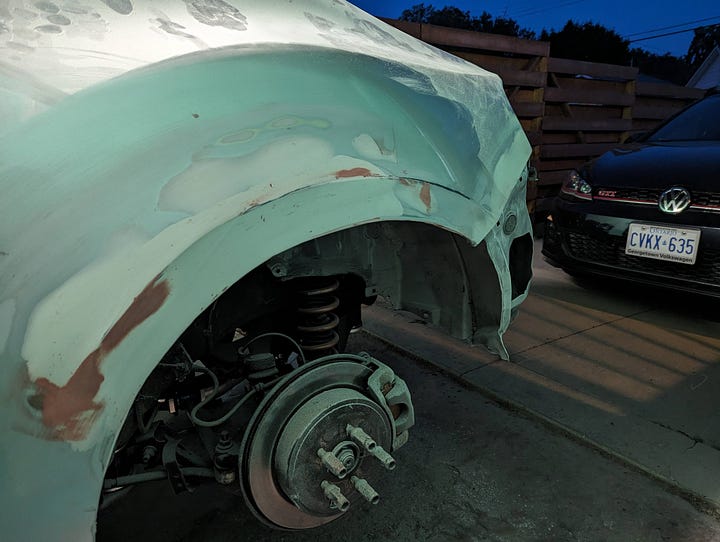
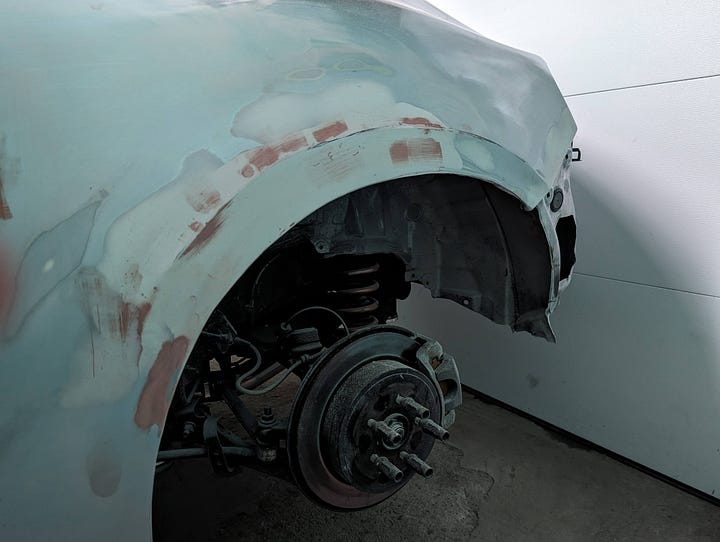
On to what was supposed to be the hard part; the jagged looking hole in the passenger side rocker panel. Mercifully, that I had a plan for that. I cut out the passenger side rocker panel from my FRS before I scrapped it, and used it as a patch panel using a combination of more scrap steel along with 3M panel bond to secure it in place. A bit of body filler and we had a smooth rocker panel.
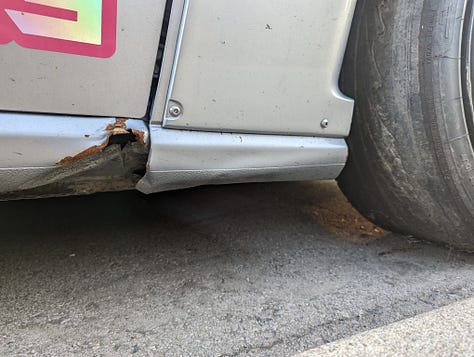

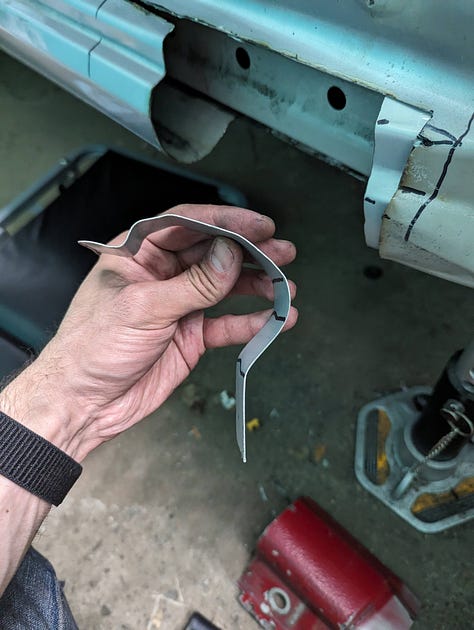
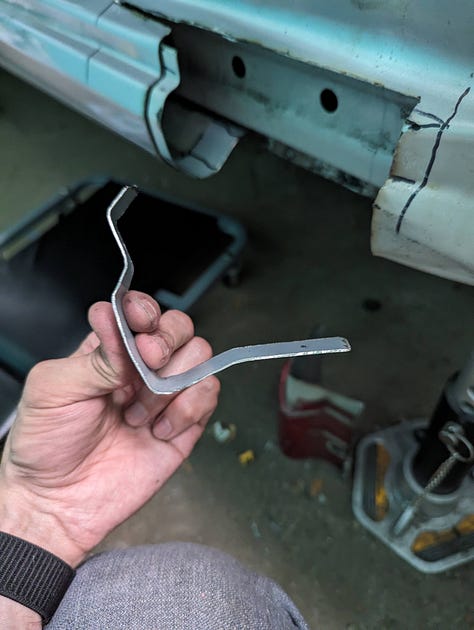

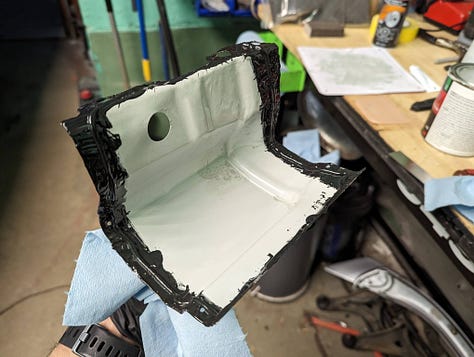
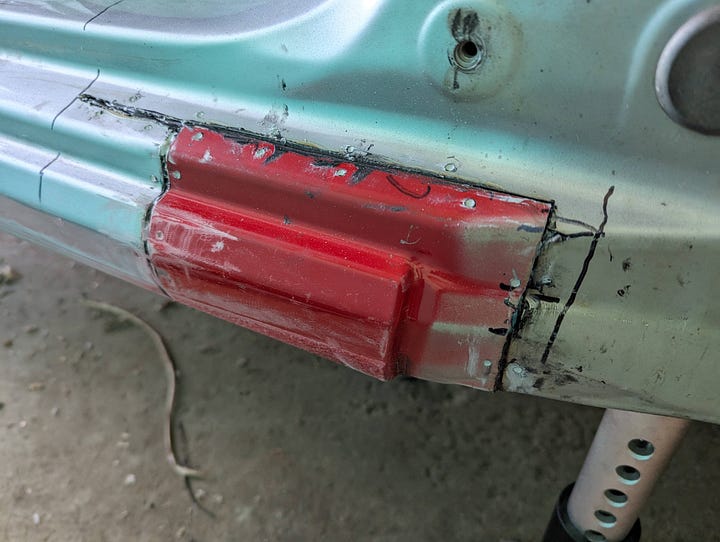
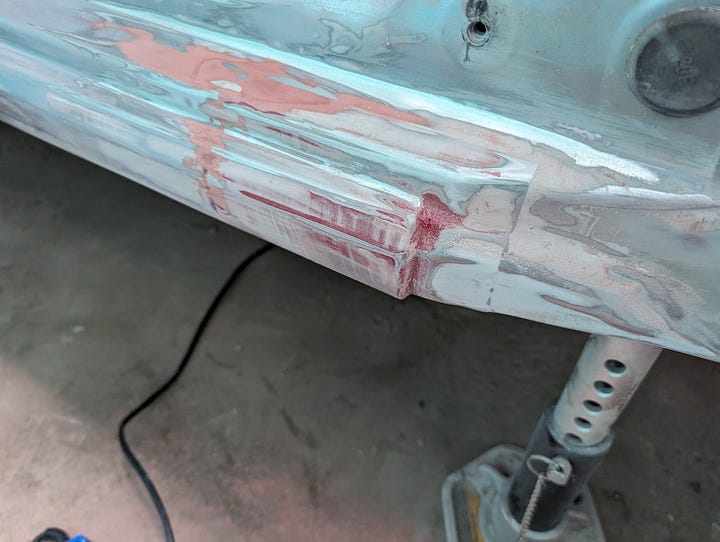
This rocker repair felt like the objectively better repair of the two, simply because I used a minimal amount of body filler to smooth out the finish. But less filler means less room to fix imperfections. And as such, the end result just isn’t as smooth.
My one regret; not applying filler primer prior to painting. Mind you, the car did get primer, but applying filler primer and sanding would have resulted in a better finish.
If you’ve made it this far, you probably fall into one of of two schools of thought:
“Wow, I could never do this”
“That’s gonna look like shit, and you’re an idiot for trying this”
Both are totally understandable. If you’re in the first camp, you’re wildly underestimating how far the internet, a complete lack of a schedule, and a chassis worth almost nothing, will get you. Venturing into the world of DIY means accepting a lot of shit. It means spending an inordinate amount of time on something a professional could achieve in minutes. It also means watching what should be a 20 minutes ordeal, become a five-hour nightmare when the wrong bolt snaps. But I also firmly believe that the care and attention that DIYers place in their craft (largely thanks to zero time constraints) can result in excellent work.
Which brings me to the latter reaction; when it doesn’t go well. And well, that’s also par the course. DIY means doing things twice, maybe three times, because you’re learning. Learning means making mistakes. These days i’m privileged enough that I can look at cars like the BRZ with an almost egalitarian attitude. It’s value doesn’t matter. It’s job is to produce joy every time I start it. I don’t care if it’s fender creases are imperfect, or if the paint is splotchy in certain spots. In this way, it starts to look less like a car, and more like a personal art project.
So maybe it will look like shit. Maybe it does look like shit.
But it’s my shit.
On to paint.

